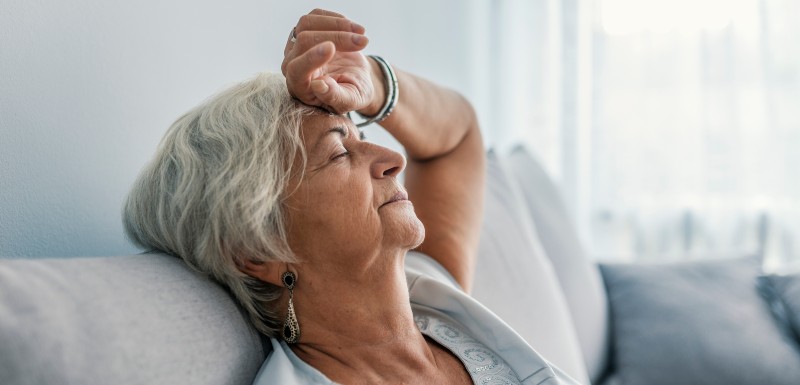The hypersomnias are mostly rare diseases, affecting adolescents and young adults. When thehypersomnolence For an elderly person who used to sleep normally, vigilance is required. Indeed, according to a recent study, this excess of sleep could be indicative of the development of certain chronic pathologies. Explanations.

Hypersomnia and excessive daytime sleepiness
L'hypersomniaalso known as thehypersomnolenceIt is the result of an excessive need for sleep. Most often, it is related to rare diseases, which begin in adolescence or early adulthood. However, some forms of hypersomnolence can occur much later in life. One of these, excessive daytime sleepiness, is defined as "an unwanted need to sleep", occurring daily, outside of the classic hours of sleepiness (around bedtime, after lunch, after a sleepless night, etc.) and constituting a nuisance.
The excessive daytime sleepiness can occur without any identified cause (idiopathic hypersomnia) or be associated with certain pathologies, such as :
- The narcolepsya ;
- The restless legs syndrome ;
- A depression ;
- L'sleep apnea.
A warning sign of illness in the elderly
According to a recent study, the excessive daytime sleepiness could also be a harbinger of some of the chronic diseasesespecially among elderly people. In this study, the researchers included 10,930 people, one third of whom were over 65 years old. Through successive telephone interviews, the researchers assessed the proportion of participants with excessive daytime sleepiness.
By analysing the data, the researchers found that subjects with excessive daytime sleepiness at the first telephone interview had an increased risk of developing certain chronic diseases in the following three years:
- A 2.3-fold increase in the risk of developing diabetes or a high blood pressure ;
- A doubled risk of developing cancer.
Monitoring sleep for new disease
On the other hand, subjects mentioning a excessive daytime sleepiness during the first two telephone interviews had a 2.5-fold increased risk of developing a cardiovascular disease. Finally, subjects reporting excessive daytime sleepiness only in the second interview had a 1.5-fold increased risk of developing musculoskeletal disorders, arthritis, tendonitis or lupus.
The results of this study highlight the importance of monitoring the sleep of elderly peopleThis is a sleep condition that may be indicative of developing chronic pathologies. The observation of a hypersomnolence The progressive or abrupt nature of the disease could allow for early detection of certain diseases and therefore for the immediate implementation of an appropriate therapeutic strategy.
Estelle B., Doctor of Pharmacy
- Hypersomnolence is a significant predictor of new medical conditions among elderly people in a longitudinal study of the general population. HEALIO. Accessed on 13 April 2020.


